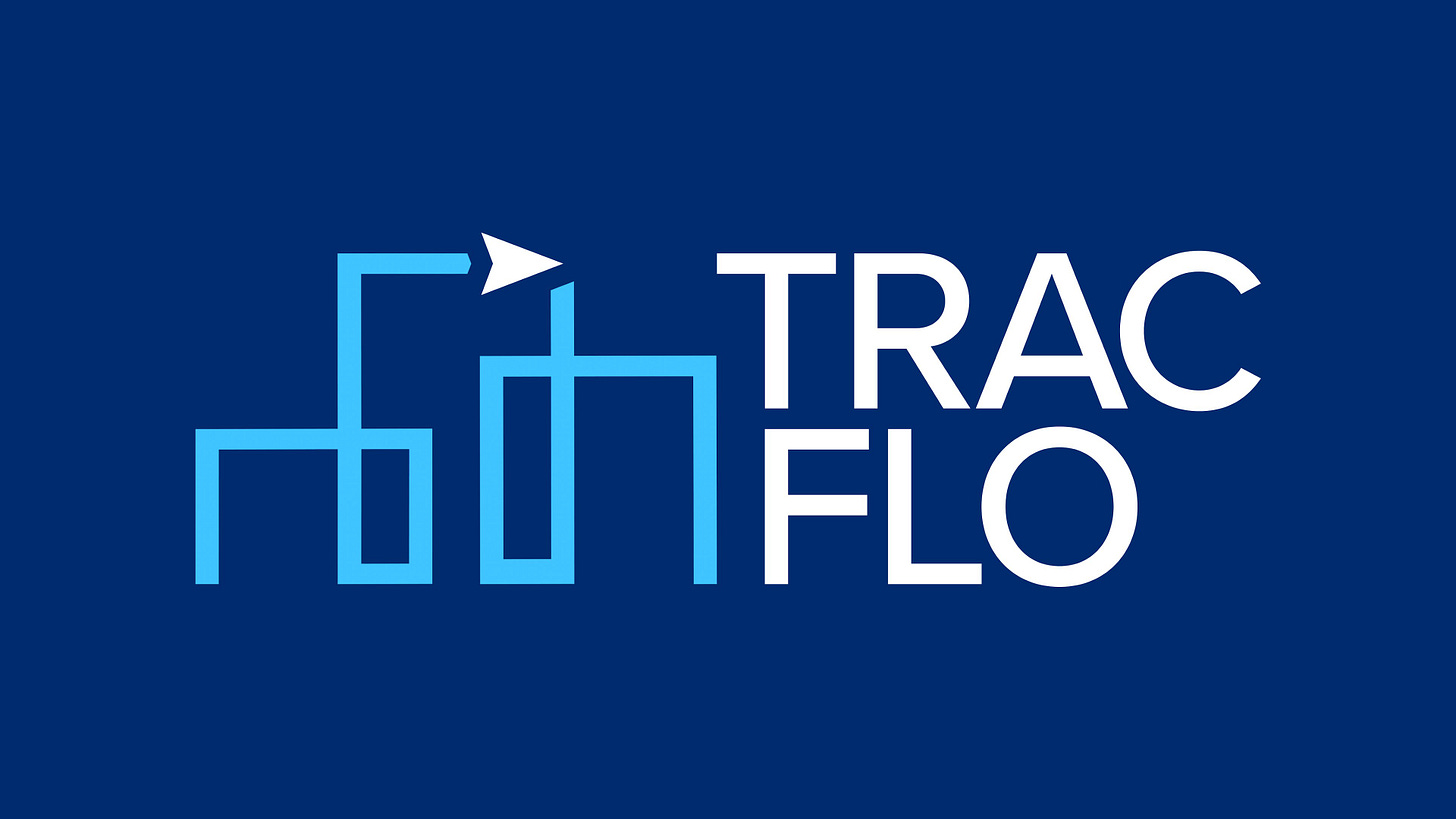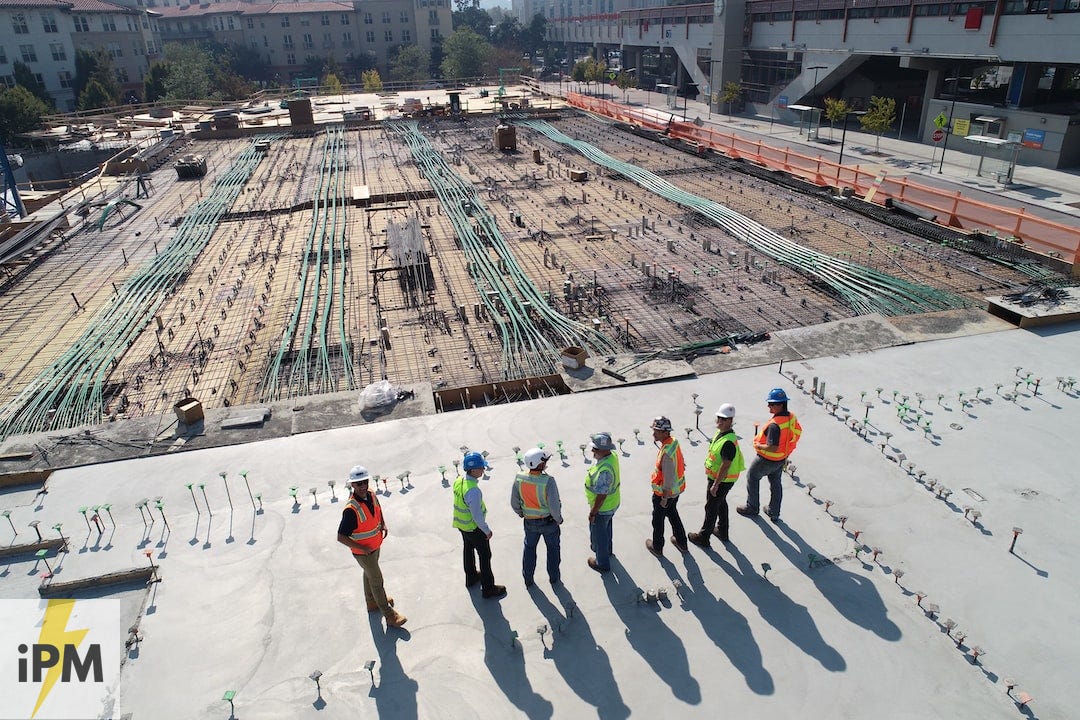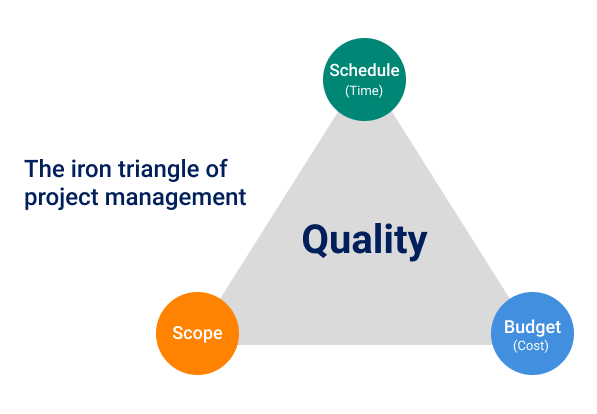A New Approach to Delivering Capital Construction Projects
Introducing Project Production Management (“PPM”)
👋 Hey, Kyle here! Welcome to The Influential Project Manager, a weekly newsletter covering the essentials of successful project leadership.
Today’s Overview:
The engineering and construction industry is in crisis, with over $1.6 trillion wasted annually due to projects not meeting time and budget targets, leading to frequent cost overruns and delays. They have become “normalized pain” for owners and their service providers.
At the root of the problem is a gap in the current approach to project delivery. The primary issue is the lack of recognition of projects as “production systems”, which requires the application of operations management principles for the best results.
‘The Influential Project Manager’ is committed to helping the industry overcome these challenges and significantly reduce cost and schedule overruns. To achieve this, the engineering and construction industry must recognize and close the glaring gap in project management. Join me today as we open our minds to a smarter way of doing business: “Project Production Management.”
Today’s Newsletter is Proudly Presented by TracFlo!
Imagine a world where project costs are under your complete control, and the mayhem of T&M tracking and change orders becomes a thing of the past. That's the world TracFlo creates. It effortlessly orchestrates every financial aspect of your projects, from tracking to approval, keeping your budget firmly on track.
Embrace the power of real-time insights and the simplicity of digital processes. TracFlo is designed for ease – easy to start, easy to learn, making your team experts in no time. Step into the driver's seat of your project's financial health. Experience the TracFlo difference with a complimentary trial and schedule your demo today.
A New Approach to Delivering Capital Construction Projects
Today, we are going to shake things up by rethinking the traditional ways of project management in the construction industry.
It may sound daunting at first, but trust me, the rewards of being open to a new approach are worth it.
Despite of our best efforts, most capital projects just aren’t hitting the mark:
31% did not meet cost or schedule.
48% met either cost or schedule.
21% met both cost and schedule.
9% met cost, schedule, and production goals.
*Source: Independent Project Analysis (IPA)
At the same time, contractors undertake way too much risk for the return on investment they realize. Every contractor, no matter how large, is only a few steps away from bankruptcy.
The problem is complex and multifaceted, but it revolves around one major blind spot: the industry fails to see projects as production systems that can be managed according to the principles of operations management.
Operations Management is the answer to the fundamental question, “How do we actually get XYZ built?”
This brings us to the concept of Project Production Management (“PPM”) - a shift away from traditional project management. PPM tackles the chronic issue of projects going over budget and schedule.
The Project Production Institute (“PPI”) spotlights a critical “gap” in our conventional project delivery approach, one that produces poor outcomes the more it is implemented.
PPM is about viewing a project as a production system that can be optimized using Operations Science. This involves managing product design, process design, capacity, inventory, and considering the inevitable variability.
Stay tuned in this week’s newsletter as we dive into PPM. Below we’ll explore the scientific principles and show how it can revolutionize the way we handle projects.
*Reader Note: PPI was founded in 2013 and operates as a not for revenue organization. It was started by a group of industry professionals driven by the desire to end the industry’s chronic project delivery failures and by the vision of enhancing the value Engineering and Construction provides to society. For more information, read the PPI manifesto.
The Illusion of Control
Are you truly in control of your project?
Most professionals in engineering and construction mistakenly believe they control their projects, until its too late.
Here's what many think control looks like:
Setting baseline schedules.
Measuring progress.
Endless meetings to talk status and forecasts.
More metrics and tools don't always mean better control. Billions are spent on tracking and forecasting, even with advanced tech like robots and drones. But that's not effective control.
True control differs significantly from mere tracking. As Peter Drucker, a renowned business thinker, noted: controls focus on past events, whereas real control is about shaping the future. In construction, this means not just tracking costs and schedule progress, but actively planning and optimizing work processes, task sequences, resource management, and overall system efficiency.
Sadly, many industry leaders fail to grasp this distinction, leading to a checkbox approach to project management rather than genuine, strategic guidance.
So, ask yourself: Are you really running your project, or just along for the ride?
What is Project Production Management (“PPM”)?
PPM is a unique way of managing construction projects that's a bit different from traditional methods. It involves blending lean construction principles with operational science to monitor, influence, and improve project production systems.
This approach employs systematic and scientific techniques to enhance both efficiency and effectiveness in project management, much like managing a factory production line.
Instead of primarily asking, “How do we best organize and administer the project?”, PPM poses a more fundamental question: “How do we best design, make, and build things?” This shift places a greater focus on the production process itself, prioritizing efficiency and profitability.
Here's how it works:
Project as a Production System: PPM views the entire project as a system designed to produce an outcome, such as a building or bridge. This perspective focuses on the project's overall workflow from beginning to end.
Detailed Planning & Control: Similar to planning a factory assembly line, PPM involves meticulous planning of every project phase. This includes task sequencing, pacing, and resource allocation.
Efficiency and Workflow: The goal is to ensure smooth, delay-free operations. PPM places a significant emphasis on production rates versus schedule dates.
Adaptability: PPM requires taking variability into consideration to adapt to unexpected changes.
Collaboration: Effective PPM relies on strong communication and coordination to synchronize all the elements inside the project.
For beginners in construction management, adopting PPM means shifting from solely focusing on time and budget to a comprehensive management of how work is executed.
It's about planning carefully, staying flexible, and always looking for ways to improve. Think of it like running a well-oiled machine, where every part works together to build something great.
The History of Project Delivery
To shape the future of project delivery, we need to understand its history.
Project delivery has evolved through three distinct eras:
Era 1: The Era of Productivity (1900-1950)
Key Approach: Scientific Management.
Main Focus: Separating planning from doing with an emphasis on increasing worker productivity. The central question was, “How can we get more out of workers?”
Era 2: The Era of Predictability (1950 - Current)
Key Approach: Traditional Project Management.
Main Focus: Reinforcing the separation of planning and doing that began in Era 1, with an emphasis on control over project outcomes and the administrative side of project management. The guiding principle is, “How can we achieve more predictable outcomes through measurement, compliance, and controls?”
Era 3: The Era of Profitability (2000 - Current)
Key Approach: Operations Management.
Main Focus: Transitioning from administrative focus to production. This era introduces the concept of treating projects as production systems. The emphasis shifts to achieving profitability rather than just fulfilling administrative tasks.
Transformation: Era 3 advocates for a move away from bureaucratic tasks like form-filling, contract management, and writing each other emails, to focus more on the core activities of designing, making, and building things (the “how”).
The Current Approach: Traditional Project Management
The traditional approach to capital project delivery hinges on the belief that the overall duration, cost, and cash flow of a project depend on the balance between scope, schedule, and cost (resources).
This is often conceptualized as the Iron Triangle, suggesting a trade-off where improving one element typically requires compromising another.
For example:
Design something quickly to a high standard, it will not be cheap.
Design something quickly and cheaply, it will not be of high quality.
Design something of high quality with low cost, it will take a long time.
However, experienced project managers know that this is an oversimplification. In reality, some projects manage to enhance scope & quality and schedule with fewer resources, while others see a decline in these areas despite increased resources. This complexity suggests the need for additional variables in project management.
Traditional project management practices focus on what work needs to be done by whom when, with a heavy emphasis on project administration.
While understanding these elements is important, they alone are insufficient for optimal project performance. The main gap in the current framework is the lack of consideration for how and where work will be performed.
New Approach: Production System Optimization
While formal project management is important, there's a big piece missing in how we currently do things.
We often think project schedules tell us everything about how work gets done, but there's more to it.
Project Production Management (PPM) introduces a new set of variables so we have the means to map, model, analyze, simulate, optimize, control and improve project production systems.
In contrast to current project management practices, PPM focuses on the rates of work being done and not dates when the work is being done. PPM focuses on managing Work in Process (“WIP”), reducing variability and adjusting capacity to meet the flow requirements as shown below.
It results in us figuring out the best way to design and build things. Think of it as having a roadmap and a toolbox to make your project work better.
Here’s what changes with Project Production Management:
Instead of just scope and quality, think about the Product Design.
Swap out traditional scheduling for smart Process Design.
Focus on Capacity – how much work your team can handle.
Monitoring Inventory – what you’re working on and what’s waiting in line.
Thinking of Variability – those unexpected twists and turns in every project.
These are what the Project Production Institute calls “The Five Levers of Production System Optimization” which are defined as:
Product Design: The design of the asset and its components, focusing on standardization, modularization, and interface mechanisms.
Process Design: The sequence of production operations; how and where work will be performed to produce the asset including how tasks are organized and the technology used. This is about the method of work, not just scheduling.
Capacity: The highest rate at which tasks can be processed, influenced by labor, equipment, and space. Success depends on balancing capacity with demand.
Inventory: The stock of resources and work-in-progress within the production flow, managed to ensure efficiency between supply and demand.
Variability: The differences in operations or outputs, affecting both the quality and timing of project tasks.
Adopting Project Production Management (PPM) leads to significant benefits like a competitive edge, cost savings, and new revenue opportunities by speeding up asset delivery.
Application: Tools & Methods
Project Production Management (PPM) involves a set of methods and tools designed to optimize the production process in construction and engineering projects.
Here are some key methods and tools commonly used in PPM:
Work Structuring: Breaking down the project to flow better.
Buffer Management: Keeping extra resources to handle variability.
Throughput Analysis: Figuring out how fast you’re getting things done. (Total Output / Time Period).
Capacity Planning: Making sure you have just enough resources.
Pull Planning and Scheduling: Planning backwards from your deadline.
Lean Construction Principles: Reducing waste, increasing value.
Statistical Process Control (SPC): Using data to make smart decisions.
Integrated Project Delivery (IPD): Getting everyone on the same page for better results.
Final Takeaways
It's no secret that the Engineering and Construction Industry is deeply committed to its schedules and deadlines, right?
We pour our efforts into tracking every little progress detail and crunching numbers for project accounts. But we're not paying enough attention to how we actually plan, control, and boost our project production.
So, how do we make Project Production Management (PPM) work for us?
To start implementing PPM today, leaders can take the following actions:
Reframe Your Perspective: Begin by shifting your mindset from a task-oriented view to a production system approach. This means viewing a project not just as a series of tasks to be completed but as a system that needs to be optimized for efficiency and profitability.
Analyze Your Production System: Analyze your current project as a production system. Identify each component of your project, how they interconnect, and where bottlenecks or inefficiencies lie.
Go Lean: Start adopting lean construction techniques to minimize waste and maximizing value. Incorporate strategies like The Last Planner System, 5S, Pull Planning, just-in-time delivery, and optimizing resource flow.
Introduce Buffer Management: Incorporate buffer management into your schedules to handle variability and uncertainty more effectively.
Focus on Work in Process (“WIP”): Monitor and manage the amount of WIP on your project. Strive to balance the workload to prevent bottlenecks and maintain a steady flow of work.
Conduct Throughput Analysis: Regularly analyze the rate at which tasks are completed (throughput) to identify and address any issues in the production flow. Look for ways to increase throughput without compromising quality.
Optimize Capacity Planning: Assess and manage your project's capacity in terms of labor, equipment, and materials. Balance labor, equipment, and material resources to match demand, avoiding excesses that lead to inefficiency.
Train Your Team: Share this newsletter and teach your team the principles of PPM and how they differ from traditional project management. Invest in training and workshops to build their skills in applying PPM methods.
Start Small and Scale: Begin with small project segments. As you see benefits and gain confidence, gradually apply PPM across larger project areas.
In short, PPM is about smart planning, resource balance, controlling the work-in-process (“WIP”), and being ready to adapt. It means running your project like a production system, filling in the gaps traditional management leaves.
Remember, it's one thing to track progress, but quite another to manage the heart of your project. That’s where the real magic happens for performance and outcomes.
Until next week,
Kyle Nitchen

When you're ready, here’s how I can help:
Upgrade your PM software. Project financials, management, and construction admin. Switch to INGENIOUS.BUILD to evolve from an administrative project manager to strategic project leader.
Get my full toolbox (free). It contains 30+ software and hardware tools I’m using today.
Hold your schedule accountable. Gain stability and flow in your projects with this Takt Planning & Control online course. Use code “Influentialpmtakt” for 30% off!
Advertise in this newsletter. Put your brand in front of 2,500+ construction project managers, leaders, and execs. (Booked out 5 weeks)
Support this Newsletter. The Influential Project Manager articles will remain free, but if you find this work valuable, I encourage you to become a paid subscriber. As a paid subscriber, you’ll help support this work.









